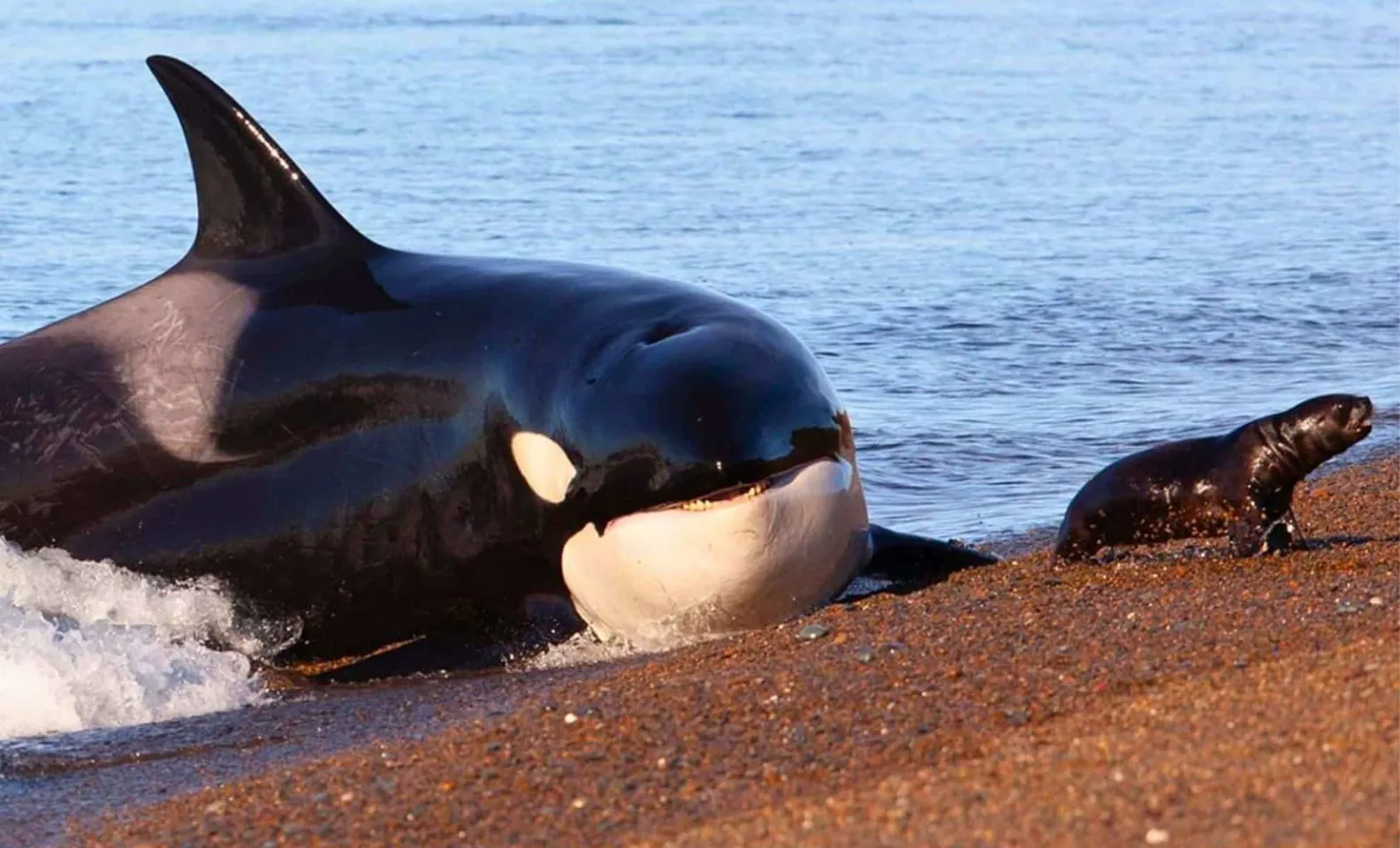The descendants of those pioneering animals include today’s dolphins and orcas—highly adapted marine predators that thrive in the ocean.
But a new study suggests the evolutionary journey that brought them here has passed a critical threshold.
This evolutionary tipping point, once crossed, closes the path to terrestrial adaptation, leaving them biologically anchored to the ocean for good.
The study found that in the case of dolphins and orcas, “a crucial tipping point” has been crossed.
The Body Changes That Sealed Their Fate Over time, dolphins and orcas developed features tailored for marine survival.
Mammals that used to roam on land started to disappear back into the sea about 250 million years ago. Dolphins and orcas, which are highly adapted marine predators that flourish in the ocean, are descendants of those pioneering animals. However, a recent study indicates that a critical threshold has been crossed in the evolutionary process that led them here. It is now too late for these animals to turn back, according to researchers.
According to the study, which was published in Proceedings of the Royal Society B, dolphins and orcas are so completely molded by their aquatic habitat that they will never be able to re-evolve for life on land. Once they cross this evolutionary tipping point, they are permanently biologically anchored to the ocean and the road to terrestrial adaptation is closed.
a single route from land to the sea.
This study, which was led by Bruna Farina, a doctoral candidate at the University of Fribourg in Switzerland, looked at the evolutionary paths of over 5,600 species of mammals. The animals were divided by Farina’s team into a range of categories, from fully aquatic to fully terrestrial. They learned that mammals’ adaptations are irreversible once they fully transition from a semi-aquatic to a fully marine lifestyle.
Dollo’s law, a well-established idea in evolutionary biology, states that complex traits are rarely restored after they have been lost due to evolution. This phenomenon falls within this framework. According to the study, “a crucial tipping point” has been crossed in the cases of orcas and dolphins. Their unique bodies, diets, and physiological systems have become so adapted to the ocean that it is no longer an evolutionary option for them to return to land.
The changes in their bodies sealed their fate.
Orcas and dolphins evolved traits specifically suited for marine survival over time. To better retain heat in cold water, their bodies grew larger. In order to meet their higher metabolic needs, they switched to a carnivorous diet. Their tails became muscular propulsion systems, and their limbs became flippers. Their reproductive systems were even modified to allow for aquatic birth.
These were not small shifts. The animals’ entire anatomy was altered to accommodate their life in open waters, where they would swim, dive, and hunt. Each of their body’s main systems—reproductive, skeletal, muscular, and respiratory—has been adapted to a particular environment. It is evident from Farina’s study that these changes are difficult to reverse.
Specialization has a price.
These adaptations have left dolphins and orcas vulnerable, even though they have allowed them to rule the ocean as top predators. The scientists caution that an animal’s capacity to adapt to abrupt changes in its surroundings is diminished by such highly specialized features. This rigidity may prove hazardous in light of climate change and rising ocean pollution.
Currently, these species are “trapped in their watery ways,” Farina and her team emphasize. They have sacrificed flexibility in order to succeed in the marine industry. These animals will have no evolutionary way out if oceanic conditions worsen beyond their biological threshold. These days, their survival depends on how well the oceans they live in are doing.
An unstable habitat with a fragile future.
The study calls for heightened awareness of fully aquatic mammals’ vulnerability as the ocean environment is increasingly disrupted by factors like acidification, rising temperatures, and dwindling prey populations. Their only choice is to adapt to the limitations of their current form because they cannot undo their evolutionary path.







